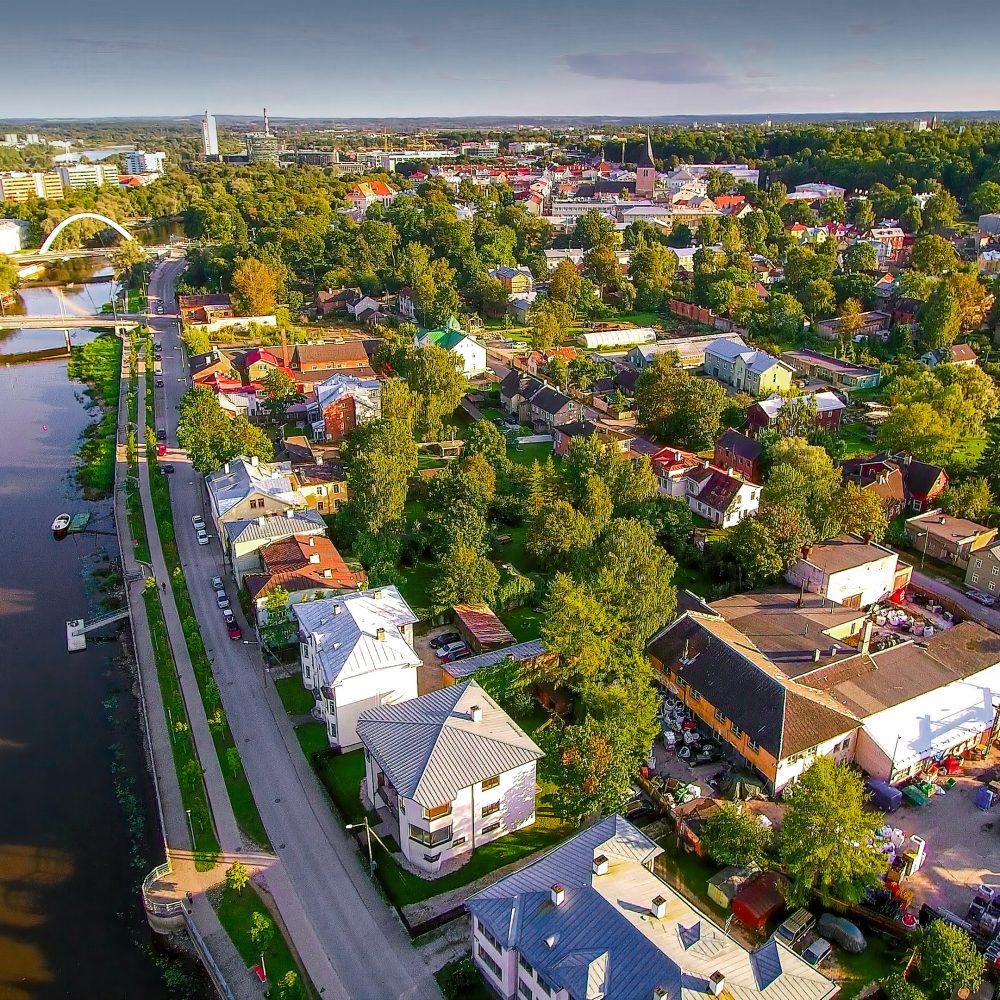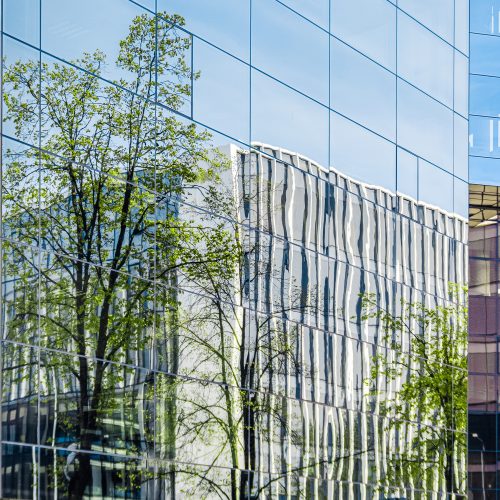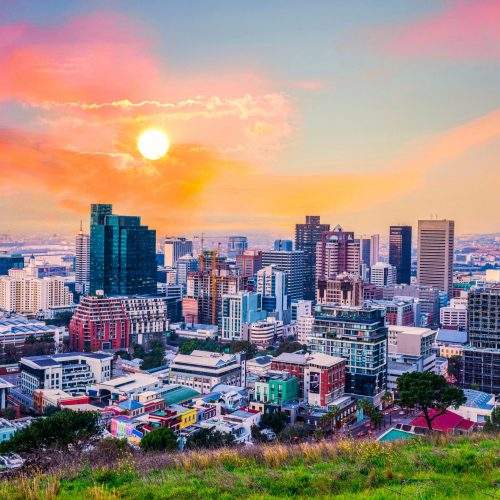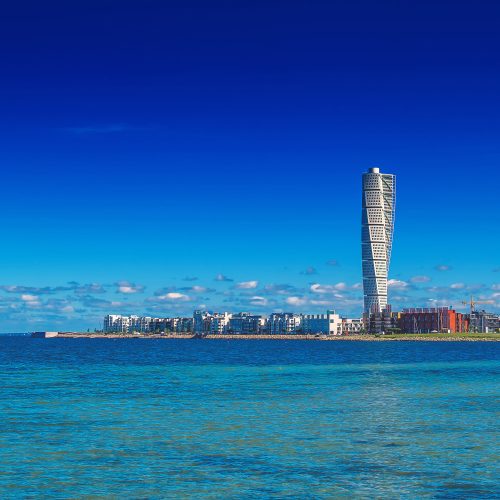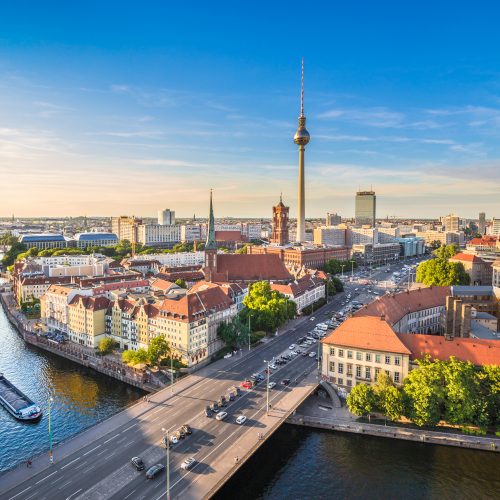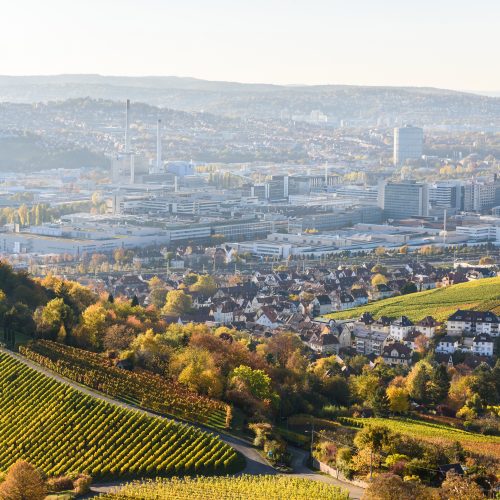Context and policy overview
Estonia’s energy system is dominated by the use of shale oil for electricity, while heating is provided by a mix of sources including local biomass and imported fossil fuels.[1] Meanwhile, around 45 per cent of heating demand is met through district heating networks.[2]
The country is committed to reducing carbon emissions through its adopted National Energy and Climate Plan 2030. The plan includes a commitment to reduce carbon emissions by 70 per cent by 2030 relative to a 1990 baseline and to ensure that renewables account for 42 per cent of final energy consumption. Meanwhile, the National Development Plan of the Energy Sector sets a target for 80 per cent of heat to be derived from renewable sources by 2030.
The city of Tartu is served by a fifty-year old district heating network and a five-year-old district cooling network. The privatised network serves around 75,000 customers and is owned and operated by Fortum Tartu. The city and the network operator have carried out multiple innovations to improve energy efficiency, air quality, carbon emissions and customer satisfaction.[3]
Implementation
Tartu’s district heating system was established in 1967 and owned first by the state and then by the municipality. Originally powered by gas and oil, the network was converted in 1995 to use biomass and peat, with financing from the World Bank and the EBRD. In 2000 the system was privatised and then acquired by Fortum Tartu in 2004. The privatisation provided the network with access to much-needed capital to carry out a systemwide renewal and to support network expansion.[4]
The municipal government has supported the district heating network through its planning policies and through securing funding for smart city innovation. The first urban development master plan for Tartu was established in 1999 and focused on sustainable development. It included an integrated district heating zone to improve air quality and customer satisfaction levels. The city council raised awareness in support of the district heating system through public campaigns. The plan mandated that all new and renovated buildings in the designated districted heating zones should connect to the heating network, unless their heat consumption was less than 40 kWh/m² per year. Meanwhile, a smart city project financed by Horizon 2020 helped to target investment to retrofit energy-inefficient homes and connect them to the heating network.
Fortum Tartu has implemented a number of business and operational innovations to sustain the performance and financial stability of the company. These include:
- vertical integration and diversification, allowing the firm to become a biomass fuel producer and supplier
- development of a new biomass combined-heat and-power plant
- growth through the expansion and acquisition of a nearby heating network operator
- development of a low-carbon district cooling network partially supplied from the Emajõgi River which runs through the centre of the city
Most recently, Fortum Tartu has participated in a low-temperature innovation pilot which has demonstrated the potential to reduce system flow temperatures from a peak of 105°C to as low as 60°C, achieving a significant reduction in losses and creating the potential to capture low-grade heat from industrial and other local sources of waste heat.[5]
Barriers and critical success factors
A number of success factors have enabled Tartu to develop and sustain its district heating and cooling system:[6]
- Privatisation has enabled the city to access investment capital and international know-how to renew and expand its district heating network and diversify operations to include district cooling and a fuel supply business.
- A strong national policy framework for district heating clarifies roles for effective operations, while pricing market regulations enable the operator to maintain a financially sustainable business.
- The local policy framework integrates development planning and energy planning to encourage higher density development and to connect new developments to the heating network.
A culture of partnership and innovation has characterised the relationship with the city, supported by multiple EU investment and research programmes. This culture will be critical to supporting the city’s recently announced goal of reducing its carbon emissions by 40 per cent by 2030 relative to 2010 and of becoming carbon neutral by 2050.[7]
Results and lessons learned
- The district heating network supplies around 50 per cent of the city’s buildings and 75 per cent of its residents.
- The price of district heating is lower than the national average.
- The network has reduced its carbon footprint to 102g/MWh per year.








